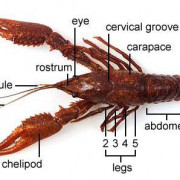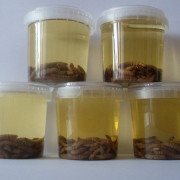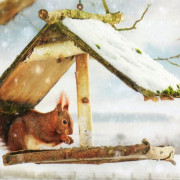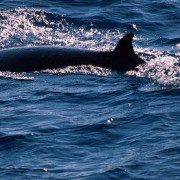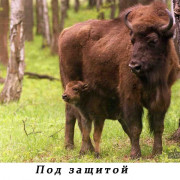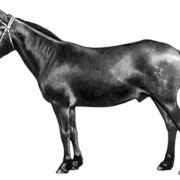ClydesdaleFan Feed
Содержание:
Topography
Location list at opening of the line, 1 June 1849 (Motherwell to South Side), 10 September 1849 (Hamilton branch).
- Motherwell; Wishaw and Coltness Railway station, somewhat to the east of the present station, at Merry Street, near the present-day Crosshill Street;
- Uddingston; at times known as Uddingston Central; still open;
- Hamilton Branch Junction; Hamilton line trails in;
- Cambuslang; still open;
- Rutherglen; replaced later by the present station in 1879;
- Larkfield Junction; junction towards the General Terminus and Greenock lines;
- South Side; may have been known as Gushetfaulds for the first few months; closed to passengers 1879 when the lien was extended to Bridge Street.
- Hamilton; renamed Hamilton West in 1876 on extension of the line to the present Hamilton Central; still open;
- Blantyre; still open;
- Hamilton Branch Junction; see above.
Notes
- According to Ross (page 53)Awdry says 5 September (page 68) and Paterson says 17 September (page 288).
- The station is sometimes referred to as South Side and Gushetfaulds, or simply Gushetfaulds.
Sources
- Awdry, Christopher (1990). Encyclopaedia of British Railway Companies. Sparkford: Patrick Stephens Ltd. ISBN 1-8526-0049-7. OCLC . CN 8983.
- Butt, R. V. J. (1995). The Directory of Railway Stations: details every public and private passenger station, halt, platform and stopping place, past and present (1st ed.). Sparkford: Patrick Stephens Ltd. ISBN 978-1-85260-508-7. OCLC .
- Jowett, Alan (March 1989). Jowett’s Railway Atlas of Great Britain and Ireland: From Pre-Grouping to the Present Day (1st ed.). Sparkford: Patrick Stephens Ltd. ISBN 978-1-85260-086-0. OCLC .
- Nock, O.S. (1961). The Caledonian Railway (1st ed.). London: Ian Allan. OCLC .
- Nock, O.S. (1964). The Caledonian Railway (2nd ed.). London: Ian Allan. OCLC .
- Nock, O.S. (1973). The Caledonian Railway (3rd ed.). Shepperton: Ian Allan. ISBN 0-7110-0408-0. OCLC .
Railscot on the Clydesdale Junction Railway
Broadcasting career
| Donald Drysdale’s number 53 was retired by the in 1984. |
A chronically sore shoulder forced Drysdale to retire during the season. The next year, he started a broadcasting career that continued for the rest of his life: first for the Montreal Expos (–), then the Texas Rangers (), California Angels (–, ), Chicago White Sox (–), NBC (1977), ABC (1978–1986), and finally back in Los Angeles with the Dodgers (from until his death in ). He also worked with his Angels’ partner Dick Enberg on Los Angeles Rams football broadcasts from –.
While at ABC Sports, Drysdale not only did baseball telecasts, but also regional college football games as well as Superstars and Wide World of Sports. In , Drysdale covered the World Series Trophy presentation ceremonies for ABC. On October 11, 1980, Keith Jackson called an Oklahoma–Texas college football game for ABC in the afternoon, then flew to Houston to call Game 4 of the NLCS between the Houston Astros and Philadelphia Phillies. In the meantime, Drysdale filled in for Jackson on play-by-play for the early innings.
In 1984, Drysdale called play-by-play (alongside Reggie Jackson and Earl Weaver) for the National League Championship Series between the San Diego Padres and Chicago Cubs. On October 6, 1984 at San Diego’s Jack Murphy Stadium, Game 4 of the NLCS ended when Padres first baseman Steve Garvey hit a two run home run off Lee Smith. Drysdale on the call:
| “ | Deep right field, way back. Cotto going back to the wall…it’s gone! Home run Garvey! And there will be tomorrow! | ” |
In his last ABC assignment, Drysdale interviewed the winners in the Boston Red Sox’s clubhouse following Game 7 of the 1986 American League Championship Series against the California Angels.
While broadcasting for the White Sox, Drysdale generated some controversy while covering a heated argument between an umpire and Sox manager Tony La Russa. LaRussa pulled up the third base bag and hurled it into the outfield, to the approval of the Comiskey Park crowd, and ensuring his ejection. Drysdale remarked, «Go get ’em, !»
For the Sox, Drysdale broadcast Tom Seaver’s 300th victory, against the host New York Yankees in 1985. His post-game interview with Seaver was carried live by both the Sox’ network and the Yankees’ longtime flagship television station WPIX.
1987
Drysdale hosted a nationally syndicated radio show called Radio Baseball Cards. 162 episodes were produced with stories and anecdotes told by current and former Major League Baseball players. The highlight of the series were numerous episodes dedicated to the memory and impact of Jackie Robinson as told by teammates, opponents and admirers. Radio Baseball Cards aired on 38 stations, including WNBC New York, KSFO San Francisco and WEEI Boston, as a pre-game show. A collector’s edition of the program was re-released in 2007 as a podcast.
1988
Drysdale conducted all of the National League player interviews for the Baseball Talk series in 1988 (Joe Torre did the same for the American League).
On September 28, 1988, fellow Dodger Orel Hershiser surpassed Drysdale when Hershiser finished the season with a record 59 consecutive scoreless innings pitched. In his final start of the year, Hershiser needed to pitch 10 shutout innings to set the mark – meaning not only that he would have to prevent the San Diego Padres from scoring, but that his own team would also need to fail to score in order to ensure extra innings. The Dodgers’ anemic offense obliged, and Hershiser pitched the first 10 innings of a scoreless tie, with the Padres eventually prevailing 2–1 in 16 innings. Hershiser almost did not pitch in the 10th inning, in deference to Drysdale, but was convinced to take the mound and try to break the record. When Hershiser broke Drysdale’s record, Drysdale came onto the field to hug him, and said, «Oh, I’ll tell ya, congratulations… And at least you kept it in the family.»[citation needed]
Drysdale also called Kirk Gibson’s walk-off home run in Game 1 of the 1988 World Series for the Dodgers Radio Network:
| “ | Gibson a deep sigh, re-gripping the bat, shoulders just shrugged, now goes to the top of the helmet as he always does, steps in with that left foot. Eckersly working out of a stretch, now here’s the 3-2 pitch…and a drive into right field (losing voice) WAY BACK! THIS BALL IS GONE! (followed by two minutes of crowd noise) This crowd will not stop! They can’t believe the ending! And this time, Mighty Casey did NOT strike out!!!! | ” |
References
- ^ E F Carter, An Historical Geography of the Railways of the British Isles, Cassell, London, 1959
- ^ Awdry
- ^ David Ross, The Caledonian: Scotland’s Imperial Railway: A History, Stenlake Publishing Limited, Catrine, 2014, ISBN 978 1840 335842
- Arthur Helps, Life and Labours of Mr. Brassey, 1805 — 1870, Bell and Daldy, London, 1872, page 162
- Ross, page 29
- John Thomas revised J S Paterson, A Regional History of the Railways of Great Britain: Volume 6, Scotland, the Lowlands and the Borders, David and Charles, Newton Abbot, 1984, ISBN 0 946537 12 7
- M E Quick, Railway Passenger Stations in England Scotland and Wales—A Chronology, The Railway and Canal Historical Society, 2002
Death
Drysdale was 56 when he died of a heart attack at Le Centre Sheraton in Montreal, Quebec, on July 3, . Radio station employees were sent to look for him when he did not appear for the bus ride to Olympic Stadium, where the Dodgers were scheduled to play the Montreal Expos. Hotel staff entered his room and found him face-down near his bed. The coroner estimated that he had been dead for 18 hours. Drysdale’s final broadcast was the night before his death.
Drysdale’s broadcasting colleague Vin Scully, who was instructed not to say anything on the air until Drysdale’s family was notified, announced the news of his death by saying, «Never have I been asked to make an announcement that hurts me as much as this one. And I say it to you as best I can with a broken heart.» Fellow broadcaster Ross Porter told his radio audience, «I just don’t believe it, folks.» While this was going on, word reached Drysdale’s former White Sox colleague Ken Harrelson as he was calling that evening’s game against the Baltimore Orioles; an emotional Harrelson had trouble relaying the news to the viewing audience. Drysdale was replaced by Rick Monday in the broadcast booth.
Among the personal belongings found in Drysdale’s hotel room was a cassette tape of Robert F. Kennedy’s victory speech after the , a speech given only moments before Senator Kennedy’s assassination. In the speech, Kennedy had noted, to the cheers of the crowd, that Drysdale had pitched his sixth straight shutout that evening. Drysdale had apparently carried the tape with him wherever he went since Kennedy’s murder.
Drysdale’s body was cremated and his ashes were placed in the Utility Columbarium in the Great Mausoleum at Forest Lawn Memorial Park in Glendale, California, but they were scattered in 2002.
Media
Television
Drysdale was a popular guest star in several television programs:
- On the May 2, 1964, episode of The Joey Bishop Show, «Joey and the L.A. Dodgers», Bishop guests are several members of the 1963 World Series Champions LA Dodgers. The teammates show off their various talents, the highlight being Drysdale, a natural singer, crooning «I Left My Heart In San Francisco».
- On the April 10, 1963, episode of The Beverly Hillbillies, «The Clampetts & The Dodgers», Drysdale and Leo Durocher play golf with Jed and Jethro, and Durocher finds out that Jed and Jethro are good baseball prospects.
- The Greatest American Hero (episode «The Two Hundred Mile an Hour Fastball», which was first broadcast on November 4, 1981 as a broadcaster for the California Stars.
- The Brady Bunch episode «The Dropout», which was first broadcast on September 25, 1970.
- Our Man Higgins episode «Who’s on First?» (May 8, 1963).
- The Donna Reed Show episodes «The Man in the Mask», first broadcast in 1962; «All Those Dreams», first broadcast in 1963; and «Play Ball» and «My Son the Catcher», both first broadcast in 1964. In all four episodes Drysdale plays himself, and in «All Those Dreams» he appeared with first wife, Ginger, and daughter Kelly.
- Leave It to Beaver episode «Long Distance Call», which was first broadcast on June 16, 1962.
- The Rifleman episode «Skull», which was first broadcast on January 1, 1962.
- The Millionaire episode «Millionaire Larry Maxwell», which was first broadcast on March 1, 1960.
- With his first wife, Ginger, on February 26, 1959 edition of You Bet Your Life with host Groucho Marx. The episode was released on the 2006 DVD «Groucho Marx: You Bet Your Life – 14 Classic Episodes».
- In 1959, Drysdale appeared as a mystery challenger on the TV panel show To Tell the Truth.
- The Flying Nun episode «The Big Game», 1st episode of the 3rd season, aired September 17, 1969.
- In 1960, Drysdale appeared in an episode of Lawman.
Film
- The number «53» used for Disney’s Herbie the Love Bug was inspired by Drysdale.
- Drysdale appears as himself (pitching) in the 1962 thriller Experiment in Terror starring Glenn Ford and Lee Remick.
- Drydale’s 1958 Topps baseball card served as a focal point in the 2000 movie Skipped Parts starring Jennifer Jason Leigh. In it a grandfather (R. Lee Ermey) makes his 14-year-old grandson (Bug Hall) throw a stack of baseball cards into a fire as a rite of passage of growing up. However, the boy saves the Drysdale baseball card, which is later seen in the final scene of the film.
- Drysdale appears as a soldier in the E-Club in The Last Time I Saw Archie (1961) starring Robert Mitchum and Jack Webb.
External links
| Accomplishments | ||||||||||||
|---|---|---|---|---|---|---|---|---|---|---|---|---|
|
| Preceded byAl Michaels | #2 play-by-play announcer, Major League Baseball on ABC— | Succeeded byKeith Jackson |
Playing career
Pitching for the Brooklyn and Los Angeles Dodgers, he teamed with Sandy Koufax during the late 1950s and early and middle 1960s to form one of the most dominating pitching duos in history. Nicknamed «Big D» by fans, Drysdale used brushback pitches and a sidearm fastball to intimidate batters, similar to his fierce fellow Hall of Famer Bob Gibson. His 154 hit batsmen remains a modern National League record.
The ball thrown for the final out of Drysdale’s 1968 consecutive scoreless innings streak.
Drysdale was a good hitting pitcher. In 14 seasons he had 218 hits, including 29 home runs. Drysdale was occasionally used as a pinch-hitter, once during the World Series.
In 1962, Drysdale won 25 games and the Cy Young Award. In 1963, he struck out 251 batters and won Game 3 of the World Series at Los Angeles’ Dodger Stadium over the Yankees, 1–0. In 1965 he was the Dodgers’ only .300 hitter and tied his own National League record for pitchers with seven home runs. That year, he also won 23 games and helped the Dodgers to their third World Championship in Los Angeles.
In 1968, Drysdale set Major League records with six consecutive shutouts and 582⁄3 consecutive scoreless innings. The latter record was broken by fellow Dodger Orel Hershiser 20 years later. Hershiser, however,did not match Drysdale’s record of six consecutive complete game shutouts.[circular reference]
Drysdale ended his career with 209 wins, 2,486 strikeouts, 167 complete games and 49 shutouts. He was inducted into the Baseball Hall of Fame in 1984, and had his number 53 retired at Dodger Stadium on July 1, 1984. At the time of his retirement, Drysdale was the last remaining player on the Dodgers who had played for Brooklyn.
He won three NL Player of the Month awards: June 1959 (6-0 record, 1.71 earned run average, 51 strikeouts), July 1960 (6-0 record, 2.00 earned run average, 48 strikeouts), and May 1968 (5-1 record, 0.53 earned run average, 45 strikeouts, with 5 consecutive shutouts to begin his scoreless inning streak, which was carried into June).
In 1965, Sandy Koufax declined to pitch the first game of the World Series because it was on Yom Kippur, a Jewish holy day. Drysdale pitched for the Dodgers instead of Koufax, giving up seven runs in 2 2/3 innings. When Walter Alston, the manager, came to the mound to remove him from the game, Drysdale said, «I bet right now you wish I was Jewish, too.» The Dodgers lost the game to the Minnesota Twins 8-2 but went on to win the Series 4 games to 3.
Drysdale and Koufax took part in a famous salary holdout together in the spring of 1966, with both finally signing contracts just before the season opened. Those contracts made them the first pitchers to earn more than $100,000 a year.
Происхождение породы и этапы племенной работы
 В начале 18-го века активизируется эксплуатация угольных шахт в долине реки Клайда, вызывая повышенный спрос на улучшение существующей транспортной сети и местного поголовья лошадей. Для этого в Шотландии осуществляется экспорт фламандских и фризских жеребцов для скрещивания с местными кобылами. В результате был получен крупный молодняк, но большее влияние на формирование породы получили жеребцы Глансер и Лампитс. Они стали родоначальниками большей части современного поголовья. Сильное влияние этих двух коней связано с их выдающимися качествами и набирающей обороты в ту пору арендой жеребцов.
В начале 18-го века активизируется эксплуатация угольных шахт в долине реки Клайда, вызывая повышенный спрос на улучшение существующей транспортной сети и местного поголовья лошадей. Для этого в Шотландии осуществляется экспорт фламандских и фризских жеребцов для скрещивания с местными кобылами. В результате был получен крупный молодняк, но большее влияние на формирование породы получили жеребцы Глансер и Лампитс. Они стали родоначальниками большей части современного поголовья. Сильное влияние этих двух коней связано с их выдающимися качествами и набирающей обороты в ту пору арендой жеребцов.
В 1837 году выходит постановление об улучшении племенной работы в Шотландии. Между хозяйствами устраиваются соревнования по лучшим представителям породы, а победителей чаще используют в случной кампании. Кроме того, были организованы очередные завозы лошадей из соседних округов.
Спустя 40 лет в Шотландии учреждается общество любителей породы, а в 1878 году подобная организация открывается в США. Одновременно создаются племенные книги и крупные заводы по выведению коней. Все это способствует стремительному росту поголовья, а высокие производительные качества повышают интерес к коням за границей. В период с 1870 по 1950-й год было экспортировано из Англии свыше 30 тысяч лошадей породы клейдесдаль, значительная часть из которых попала в Америку.
В 20-м веке порода могла полностью исчезнуть. Если в период до Второй мировой войны спрос на тяжеловозов еще поддерживался, то потом в производстве и сельском хозяйстве полностью перешли на механизированную технику. Сороковые годы стали наиболее печальными для ломовых коней – с 1946-го по 49-й годы число чистокровных жеребцов сократилось с 200 до 80.
Клейдесдали – порода крупных тяжелоупряжных лошадей, распространенных во всем мире благодаря своим экстерьерным качествам.
 Длительное время порода считалась под угрозой исчезновения. Лишь в 90-е годы начинается работа по восстановлению популяции. На современном этапе развитие породы активизирует туристический интерес к породе, а лошади все чаще выступают во всевозможных шоу-программах. С 2010 года порода вышла из числа находящихся под угрозой – численность кобыл превысила 1500 голов.
Длительное время порода считалась под угрозой исчезновения. Лишь в 90-е годы начинается работа по восстановлению популяции. На современном этапе развитие породы активизирует туристический интерес к породе, а лошади все чаще выступают во всевозможных шоу-программах. С 2010 года порода вышла из числа находящихся под угрозой – численность кобыл превысила 1500 голов.
Гармонично сложенный тип упряжной лошади сыскал мировую популярность породы. Клейдесдальские кони распространены во многих странах, а также были активно использованы при формировании новых линий и породных групп. Так, была сформирована австралийская линия с улучшенными легкоупряжными качествами. В самой Англии активно производили гибридизацию с пони для получения лошадей средних размеров с высоким тягловым усилием. Такой необычный тип должен был обеспечивать перевозку фронтовой артиллерии в годы Первой мировой войны.
See also
- Baseball portal
- Biography portal
- List of Major League Baseball all-time leaders in home runs by pitchers
- List of Major League Baseball players who spent their entire career with one franchise
- List of Major League Baseball individual streaks
- List of Major League Baseball single-inning strikeout leaders
- List of Major League Baseball career wins leaders
- List of Major League Baseball annual strikeout leaders
- List of Major League Baseball annual wins leaders
- List of Major League Baseball career hit batsmen leaders
- List of Major League Baseball career strikeout leaders
- Major League Baseball titles leaders
Экстерьер и особенности использования
Стандарт породы менялся несколько раз. До 1930-х годов в племенные книги чаще вписывали компактных животных относительно невысокого роста (влияние материнских генов) для ломовых лошадей. С 40-х годов меняется направление селекционной работы на укрупнение и приведение породы к типу шайров и першеронов. Сейчас это крупные лошади с ростом в холке до 190 см и массой до 1000 кг и более.
Клейдесдали обладают внушительной головой с прямым или несколько выпуклым профилем. Глаза расставлены широко, выразительны. Спинка носа и лобная доля покрыты белой шерстью, выгодно контрастирующей с основной мастью.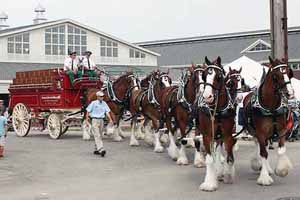
Средние промеры по породе:
- рост в холке – 165-190 см;
- объем грудной клетки – 220-250 см;
- косая туловища – 173-205 см;
- обхват пясти – 20-23 см;
- живой вес – 800-1000 кг.
Шея длинная, мощная хорошо прикреплена к телу, не имеет изгибов. Грудная клетка глубокая, большая, бочкообразная. Лопатка длинная, поставлена под углом. Конечности мощные, особенно хорошо развиты тазовые. Мускулатура мощная, крестец и бедра выполнены. Передние конечности прямые, направлены к земле по идеальной прямой. Суставы крупные, дистальные отделы ног длинные, но уплощенные.
Для породы свойственно заболевание прогрессирующим хроническим лимфодермитом. Основная масть лошадей представлена вороными, гнедыми, серыми или рыжими цветами. Для клейдесдалей характерно наличие белых отметин на морде, конечностей и реже на брюхе. Шерсть длинная, особенно на щетках.
Первоначально животных эксплуатировали для транспорта каменного угля и сельскохозяйственных работ. Со временем число работ увеличивалось, особую популярность ломовые кони снискали на доставке продукции пивоварен и винокурен. Популярность использования тяжелоупряжных лошадей на доставке пива сделала клейдесдальскую породу символом торговой марки Будвайзер.
Некоторых животных активно используют для выездки. В Шотландии чрезвычайно популярны местные соревнования, включающие скачки и конкур. Но эти мероприятия больше относятся к торжественным мероприятиям, чем к спортивным состязаниям и обычно приурочены к важным датам и деловым визитам на высшем уровне.
Породу часто используют для съемок в кинофильмах, реклам. Мировая популярность клейдесдалей связана с их яркой внешностью, отличающей от других ломовых животных. Это гораздо более элегантные и гармонично сложенные кони. Красоту дополняет и яркая масть, позволившая использовать коней для королевской упряжки.
Использование
Клейдесдаль был первоначально использован для сельского хозяйства, перевозки угля в Ланаркшире и тяжелых перевозок в Глазго. Сегодня Клейдесдаль все еще используется как тяжеловоз в сельском хозяйстве, лесозаготовках и в повозках. Их также используют для верховой езды, а также держат для удовольствия. Клейдесдаль, как известно, часто выбирают для перевозки людей, и для парада с участием лошадей из-за их белых ног. Наряду с каретными лошадьми, Клейдесдаль также используются в качестве выставочных лошадей. Они демонстрируются на государственных ярмарках, а также на национальных выставках.
Клейдесдаль в повозке
Некоторые из самых известных представителей породы принадлежат пивоварне Budweiser и стали международным символом как породы, так и марки. Программа разведения Budweiser, с ее строгими стандартами окраски и конформации, повлияла на внешний вид породы в Соединенных Штатах до такой степени, что многие люди считают, что Клейдесдаль всегда заливаются белыми отметинами.
Некоторые Клейдесдали используются для верховой езды и могут быть заезжены под седло, а также в упряжь. Благодаря их спокойному характеру, они оказались очень просты в обучении и из них можно сделать исключительных беговых лошадей. Клейдесдаль и Шайры используются британской бытовой кавалерией в качестве барабанных лошадей, во время парадов на торжественных и государственных мероприятиях. Лошади имеют привлекательные масти, больше всего ценится пегая. Чтобы использовать её для этой цели, барабанная лошадь должна иметь высоту минимум . Они везут Офицера Музыкальной Поездки и два серебряных барабана весом 56 кг каждый.
В конце XIX века кровь Клейдесдаля была добавлена в породу ирландского тяжеловоза в попытке улучшить и оживить эту истощающуюся породу. Тем не менее, эти усилия не считались успешными, так как ирландские тяжеловоза думали, что кровь Клейдесдаля сделала их лошадей более грубыми и слабыми задними ногами. Клейдесдаль сыграл важную роль в создании лошади цыган Ваннер, выведенной в Великобритании. Клейдесдаль, наряду с другими породами породы, также использовался для создания австралийской ломовой лошади. В начале XX века их часто пересекали с пони Дейлс, создавая разводных лошадей среднего размера, полезных для вывоза коммерческих вагонов и военной артиллерии.
| Это заготовка статьи по иппологии. Вы можете помочь проекту, дополнив её. |
Для улучшения этой статьи желательно:
Найти и оформить в виде сносок ссылки на независимые авторитетные источники, подтверждающие написанное.Викифицировать статью.Поставить правильное ударение.Пожалуйста, после исправления проблемы исключите её из списка параметров. После устранения всех недостатков этот шаблон может быть удалён любым участником.
- Dutson. — С. сс. 348–351.
- (недоступная ссылка). Дата обращения 12 февраля 2019.
- (недоступная ссылка). Дата обращения 12 февраля 2019.
- (недоступная ссылка). Дата обращения 12 февраля 2019.
World Championships
Drysdale began competing at World Cup level in 2002, in the New Zealand coxless four. After the 2004 Olympic Games, in which his New Zealand crew finished fifth in the final, Drysdale switched to the single scull, winning the 2005 World Championships at Gifu, Japan, despite having broken two vertebrae in a crash with a water skier earlier in the year.
He successfully defended his title in 2006 at Dorney Lake, Eton, England, in 2007 at Munich, Germany, and again in 2009 in Poznań, Poland, holding off Britain’s Alan Campbell and Czech Republic’s Ondřej Synek. At the 2009 World Rowing Championships he also beat his own World Record in the single and reduced it to 6:33.35.
Характеристики породы
Строение Клейдесдаля сильно изменилась на протяжении своей истории. В 1920-х и 1930-х годах это была компактная лошадь меньше, чем Шайр, Першерон и Бельгийская. Начиная с 1940-х годов, племенных животных отбирали для производства более высоких лошадей, которые выглядели более впечатляюще на парадах и выставках. Сегодня Клайдсдейл имеет высоту от 163 до 183 см и веситот 820 до 910 кг. Некоторые зрелые самцы крупнее, ростом выше 183 см и весят до 1000 кг. Порода имеет прямой или слегка выпуклый профиль лица, широкий лоб и широкую морду. Она мускулистая и сильная, с изогнутой шеей, высокой холкой и наклонным плечом
Общества, занимающиеся разведением, уделяют пристальное внимание качеству копыт и ног, а также движениям лошади. Их походка активная, с четко поднятыми копытами и общим ощущением силы и качества.
Клейдесдаль энергичны. Общество лошадей Клейдесдаль описывает их как «весёлые нравом». Установлено, что Клейдесдаль подвержены риску хронической прогрессирующей лимфедемы, заболевания, с клиническими признаками которого включают прогрессирующий отек, гиперкератоз и фиброз дистальных конечностей, который похож на хроническую лимфедему у людей. Другая проблема со здоровьем — это состояние кожи на голени. Говорят, что в разговорной речи «зуд Клайда» вызван каким-то видом чесотки. Также известно, что у Клейдесдаля возникает солнечный ожог на любой розовой (непигментированной) коже вокруг лица.
Клейдесдаль обычно гнедой масти, но встречаются также пегие, черные и серые. Большинство из них имеют белые отметины, в том числе белые на морде, ступнях и голенях, а также случайные пятна на теле (как правило, на нижней части живота). Часто встречаются лошади «в носках». Считается, что пятна и обширные белые отметины являются результатом генетики сабино. Некоторые заводчики Клейдесдаль хотят вывести лошадей с отметинами на морде и «в носках», но без пятен на теле. Чтобы попытаться получить идеальный набор меток, они часто скрещивают лошадей с одной белой ногой или лошадей с четырьмя белыми ногами. В среднем в результате получается жеребенок с желаемым количеством белых отметин.
Olympic Games
At his first Olympic Games, in 2004, Drysdale was part of the New Zealand coxless four team that finished fifth.
Drysdale was officially selected as New Zealand’s Olympic heavyweight sculler for the Beijing Olympics on 7 March 2008. He was also chosen to carry the flag for New Zealand during the parade of nations in the opening ceremony.
Unfortunately for Drysdale, a severe gastrointestinal infection in the week before his final saw him off form and he was only able to win the bronze medal in the men’s single scull. The gold and silver medals went to Olaf Tufte from Norway and Ondřej Synek from the Czech Republic, respectively. Clearly suffering from his illness, after his race Drysdale was carried by life raft and then moved to a waiting ambulance. He was also seen vomiting. He was, however, able to stand to be awarded his medal.
At the 2012 Summer Olympics Drysdale won the gold medal in the men’s single sculls, despite throwing up the morning of race day due to nervousness. He has since been dethroned, and had to settle with silver in the world championships leading up to the 2016 Olympics, each time bested by the Czech Ondřej Synek, who won the WC in 2010, 2013, 2014 and 2015.
At the 2016 Summer Olympics, Drysdale successfully defended his Olympic men’s single sculls title, taking the gold medal over Croatia’s Damir Martin. The race was decided by a photo finish, with Drysdale edging out Martin by half a bow ball. In November 2016, Drysdale announced that he would take a break from rowing in 2017. He returned to the New Zealand squad at the end of 2017 with a view of competing at the 2020 Tokyo Olympics.
History
The traditional owners of the area are the Ngarinjin, Miwa and Wilawila peoples.
The pastoral lease is currently owned by the Koeyers family who took up the lease in 1985. The Koeyers run about 8,000 head of cattle on the million acre, 4,047 square kilometres (1,563 sq mi) property.
The area was initially taken up in 1882 by the Victorian Squatting Company and the Drysdale River was named by explorer Charles Burrowes in 1886. The company estimated the size of the run as being about 5 million acres, or 20,234 square kilometres (7,812 sq mi). Burrowes had been sent by the company to survey it and compile a report, wrote a glowing account of the country and prophesizeda great future for it. Captain Joe Bradshaw took up the lease in 1891 as part of a large area extending along the Prince Regent River. While lost during an exploration of the area Bradshaw stumbled across the Indigenous Australian Gwion Rock paintings which are over 50,000 years old and are commonly referred to as the Bradshaws once rediscovered in 1998. He sent his steamer, the Red Gauntlet, ahend of him with Aeneas Gunn to construct stockyards while Bradshaw began to drove his herd overland from Queensland. Bradshaw was met at the border by a party of policemen who demanded a tax of 1 pound per head to bring them into Western Australia. He refused and took his stock down the Victoria River to establish another station, Bradshaw’s Run now known as Bradshaw Station.
The remoteness of the station was partially remedied by the surveying and construction of the Kalumburu Road from the Gibb River Road to Kalumburu in 1954.
Dick Condon acquired the property in 1967 with the intention of making many improvements, he spent a large amount of money on the station including the construction of a new homestead. The homestead was to be situated close to the river until it was noticed the debris stuck in the treetops along the riverbanks. It was then built 1.5 kilometres (0.93 mi) from the river, just far enough to avoid being inundated by the floods of 1986 and 1997. Condon sold the property off to an overseas company and it was left to fall into disrepair.
The station is almost inaccessible by road during the wet season between December and May each year. During this time the area is dependent on the station’s airstrip which was upgraded in 2002 following funding from the state government in 2001.
In 2012 the leasee was Sunlight Holdings, Drysdale River is operating under the Crown Lease numbers CL515-1967
and CL539-1995 and has the Land Act numbers LA398/446 and LA398/844.

